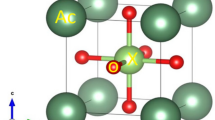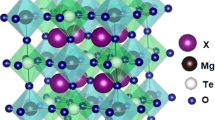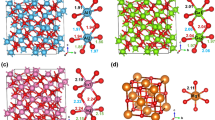Abstract
About 80 different synthetic trioctahedral micas {K}[Fe2+ 3−x Me x ]〈Si,Al,Fe〉4O10(OH)2 with Me = Ni2+, Mg2+, Co2+, Al3+ and Fe3+ have been synthesized by hydrothermal methods and subsequently investigated by 57Fe Mössbauer spectroscopy. Mössbauer spectra were refined in terms of a quadrupole splitting distribution (QSD) with at least 2 components for Fe2+ and additional components for Fe3+ on octahedral and tetrahedral positions. Three Fe2+ components have to be used in all samples containing distinct amounts of trivalent cations (Fe3+, Al3+). A rough positive correlation between the intensity of this third Fe2+ QSD component and the content of trivalent octahedral cations has been found. Substitution of Fe2+ by smaller divalent cations causes a distinct increase of ferrous quadrupole splitting. This suggests the remaining Fe2+O4(OH)2 octahedra to become more regular. This holds true for micas with 〈AlSi3〉 and with 〈FeSi3〉 composition of the tetrahedral sheet. In micas with Fe3+ in tetrahedral coordination there is a distinct increase of the quadrupole splitting of tetrahedral Fe3+ with decreasing size of the octahedral sheet. This can be explained by an increasing distortion of the second oxygen coordination sphere around tetrahedral Fe3+ due to increasing ditrigonal distortion of the tetrahedral sheet.
Similar content being viewed by others
References
Annersten, H., Am. Mineral. 59 (1974), 143.
Dyar, M. D. and Burns, R. G., Am. Mineral. 71 (1986), 951.
Dyar, M. D., Am. Mineral. 75 (1990), 656.
Redhammer, G. J., Beran, A., Dachs, E. and Amthauer, G., Phys. Chem. Min. 20 (1993), 382.
Redhammer, G. J., Dachs, E. and Amthauer, G., Phys. Chem. Min. 22 (1995), 282.
Redhammer, G. J., Hyp. Interact. 117 (1998), 85.
Redhammer, G. J., Beran, A., Schneider, J., Amthauer, G. and Lottermoser, W., Am. Mineral. 85 (2000), 449.
Rancourt, D. G., Phys. Chem. Min. 21 (1994), 244.
Rancourt, D. G., Phys. Chem. Min. 21 (1994), 250.
Rancourt, D. G., Ping, J. Y. and Berman, R. G., Phys. Chem. Min. 21 (1994), 258.
Rancourt, D. G., Christie, I. A. D., Royer, M., Kodama, H., Robert, J.-L., Lalonde, A. E. and Murad, E., Am. Mineral. 79 (1994), 51.
Rancourt, D. G., Ping, J. Y., Boukili, B. and Robert, J.-L., Phys. Chem. Min. 23 (1996), 63.
Rancourt, D. G. and Ping, J. Y., Nucl. Inst. Meth. Phys. Res. B (NIMB) 58 (1991), 85.
Redhammer, G. J., Habilitation thesis (in German), RWTH Aachen, Germany, 2001, pp. 320.
Author information
Authors and Affiliations
Rights and permissions
About this article
Cite this article
Redhammer, G.J., Amthauer, G., Lottermoser, W. et al. Quadrupole Splitting Distribution of Fe2+ in Synthetic Trioctahedral Micas. Hyperfine Interactions 141, 345–349 (2002). https://doi.org/10.1023/A:1021224019074
Issue Date:
DOI: https://doi.org/10.1023/A:1021224019074




